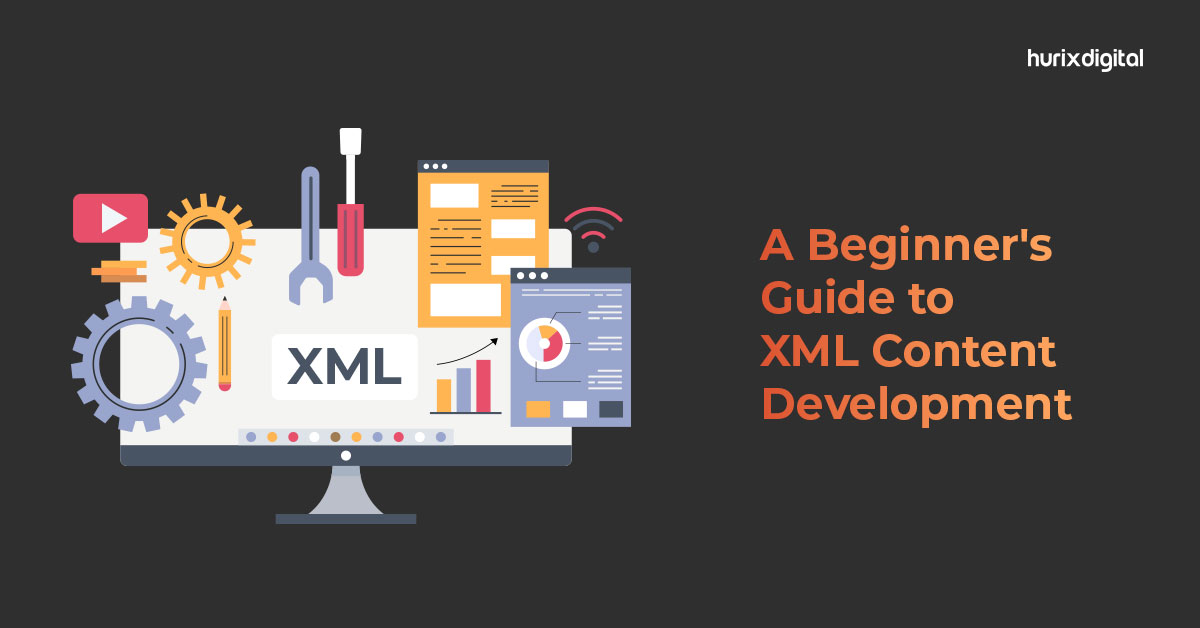
Role of XML Publishing Software in Print and Digital Publishing
Publishing print or digital content is a lengthy and cumbersome process and requires publishers to create several formats of documents and maintain them. Further, editing all these formats is another challenge and would mean you are looking at redundancy. However, using XML workflow allows you to do it much more simply and conveniently. Read on to know more about XML workflows and the role of XML publishing software, specifically in print and digital publishing.
Table of Contents:
1. What is XML?
2. What is XML-first Workflow?
3. Role of XML Workflows in Print and Digital Publishing
What is XML?
XML is essentially a metalanguage and its use in publishing is considered ideal, as it allows to catalog and structure any sort of content.
XML is a preferred format in print and digital publishing due to its interoperability between platforms and universal standards.
It helps to create an ideal environment for sharing and editing content. Since it separates content from its formatting, it can also be edited and re-formatted simultaneously, thus allowing for seamless integration between the beginnings and production phases within a publication’s life cycle.
Publishing systems based on XML share below common characteristics-
1. Compliance with XML standards
Among some of the indications of a strictly compliant system include-
- Information is originally authored in XML
- All XML capabilities, including advanced constructs, are completely supported
- XML is the default file format
2. Modularity
To support reuse, the XML software system must provide convenient ways to browse existing document objects and offer notification of changes.
3. Adaptability
XML software for next-generation publishing systems adapt to below three key requirements-
- Author productivity, i.e., it should be adaptable to the various menu layouts and key assignments that best meet the authors’ requirements.
- Integration with other systems such as workflow software, document management software, and more.
- Automation, i.e., the software should offer the flexibility to perform different data processing functions, such as calculating values, sorting, and more.
What is XML-first Workflow?
In a traditional workflow software, what comes first is content creation and editing. At times, the entire document is converted to PDF on its way through different channels, and XML tags are added only at the end.
In contrast to this, with an XML-first workflow, XML tags are inserted from the beginning, and documents are also formulated with XML in retrospective effect from the beginning. XML here severs the ties between content and layout, thus separating content from format. This makes the content secure, editable and renders it convertible to multiple output formats.
A publishing process based on XML (print or digital) has several advantages. Among some of these advantages are-
- Content defined in XML publishing software is both platform and software independent.
- Since XML separates published content from presentational information, it is also independent of a particular display format.
- XML software simplifies the generation of multiple formats from a single source using multiple technologies such as XSLT
- It allows the content to be completely future compatible with various emerging publication formats by defining an appropriate transformation to those formats.
E-Book:
Hurix Minibook: The Paradigm Shift in Higher Education with Curriculum Development
Download Now!
Role of XML Workflows in Print and Digital Publishing
Here are some of the advantages and the role played by XML-first adoption in digital and print publishing-
1. Brings intuitiveness
XML publishing software gives you the advantage of intuitive documents that adapt themselves to any publishing medium. This, in turn, enables useful repurposing of content to eliminate any kind of redundancies. Further, it also reduces the need to convert one format to another every time, thus enhancing overall publishing efficiency.
2. The advantage of platform independence and interoperability
When digital as well as print publishers adopt XML software upfront, it simplifies the entire process of publishing by enabling the delivery of multiple digital formats, including ePub, PDF, HTML, and more quickly. Apart from this, it also helps repurpose content and layouts across multiple platforms.
3. Makes way for collaboration
Using XML software and incorporating XML tags right at the authoring stage, independent chapters can be handled by different editors/SMEs simultaneously, thus making it simple to collaborate. Another advantage of this is that making global style changes becomes effortless, along with designing content that is specifically suited for the web.
4. Scalability
When print and digital documents are created with XML workflows, it becomes easier to repurpose, scale, and enhance the content. XML workflows can be repurposed as many times as you like in any of your preferred formats and still give you the freedom to customize the document to meet your specific requirements.
5. Cross-device/cross-browser accessibility
XML workflows make documents readable on all browsers and devices, thus enhancing audience reach significantly. Being accessible across multiple devices and browsers is one of the most important requirements for digital content these days, and XML workflows serve the purpose right.
6. Fits the web quite naturally
Another advantage of using an XML-first approach is that it tailors the content to make it work for the web. Further, it helps publishers ( both print and digital) to amplify their market leadership by fully eliminating the need to re-create content across different channels and platforms, thus improving overall publishing efficiency.
7. Increased productivity
Every publisher wants to be highly effective and efficient with their content, and XML workflows fulfill the purpose well. Using XML workflows, you can easily convert all your content/ documents into a standard format that is accessible to everyone. This saves a great deal of time otherwise required for converting and formatting your document every time you need to switch formats.
To Wrap
XML is one of the best technologies around which to build a publishing process. Since it is a platform and software independent language, it can be transformed into several common publishing formats, including content formats used on the web.
XML workflows or XML publishing software are a great way to break the ties between the content and the format leaving wider room for print and digital content creators to tap into their creativity without worrying about the structure.
Further, XML, with its ability to repurpose into any format, ensures that your content can reach a potentially larger audience, thus enhancing your visibility manifolds. Contact us today for more information.

Vice President – Digital Content Transformation. He is PMP, CSM, and CPACC certified and has 20+ years of experience in Project Management, Delivery Management, and managing the Offshore Development Centre (ODC).






